It seems like farming should be simple. The cows eat grass, come in to be milked, the milk gets sold, and life is good, right? The more I learn about farming the more I understand how complicated, and how expensive it is.
I hadn’t been to Cedo’s farm for a while, so last Friday we headed up there together. First we had to stop in Conception to pay for the cattle food that would be delivered later. Then we had to stop at Cooleche (the farmer’s cooperative) where she paid what was owed there for various supplies, bought medicine, salt, and minerals which were loaded up into the back of my car.
Recently also, she has had to replace a water heater so the water would be hot enough to disinfect the pipes that carry the milk to the storage tank. Then, something shorted out the electric line that runs to the electric fences so she had to buy wire, and pay and electrician to install it to restore power to the farm. Meanwhile the caretaker was living in the dark and milking by hand. She has had to buy special food and medicine for the calf who had diarrhea and wasn’t doing well. She has had to buy seed and pay someone to plant it to grow more grass for the cows. The vet has to check one of the cows who has a sore foot, probably a stone in the hoof. The list just goes on, and it seems like every week there is something else that needs to be attended to. Don’t even ask how complicated it was to get two 55 gallon drums of molasses filled and delivered to the farm! At least I can help a bit now and then by driving so she doesn’t have to do it all by bus.
So anyway, we arrive at the farm in the late morning.
Every other day the caretaker cuts tall grass for the cows, hauls it back to the milking building, runs it through the chopper, and serves it to them for lunch and dinner. The molasses is diluted with water and sprinkled over the grass. It adds nutrition and since they like the taste, they eat better and produce more milk.
The bull does not like visitors. Do not touch my women. Do not look at my women. Don’t even think of being on the same farm as my women! This bull apparently has no respect for human women and respect only for a couple guys who he knows, like the caretaker. We are very careful to know where the bull is at all times, and to not go into the pasture where he is. But, to his credit, he has been doing his job and most of the cows are pregnant.

The cows start to eat while the caretaker ties the bull to the railing (behind the black and white cow on the left)
The farm also has chickens and pigs. In the past it produced vegetables for sale to restaurants, but that would take more work and manpower than is available now. It currently does produce squash, chayote, bananas, plantains, and citrus fruits though, and I am often the recipient of some very nice gifts from the farm.
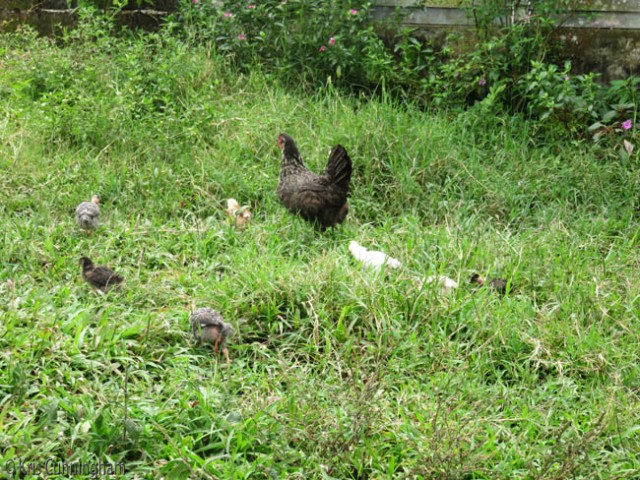
Baby chicks follow their mother around. There were also some bigger ones out exploring on their own.
One of the pasture areas was recently planted with grass for the cows. It is a bit far from the milking and feeding area but Cedo explained that it will be included in the pasture rotation. The cows will be allowed to graze one day, some fertilizer will be applied, the grass will be allowed to grow for a few days, and then the cycle will be repeated.
Cedo asked me to take some photos of the corner of the wooded area to remind her about something, maybe checking the condition of the fence?
I love how so many of the trees are almost their own forests, covered with a variety of other plants.
Cedo has had a lot of trouble with calves, and has lost three of the last four ones born. She got this one medicine, special food, and a very specific list of instructions for the caretaker that must be carefully followed. This calf looked like skin and bones when I saw it last, but thankfully she is thriving now and looks so much better!
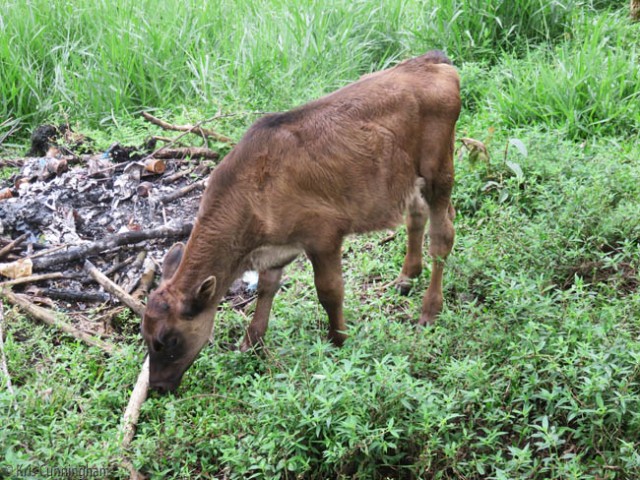
Cedo says this breed of cattle never looks very plump, and she was very happy with the condition of the calf now. She certainly looked way better than when I had seen her before!
I don’t know much about farming and taking care of animals, but the more I learn the more I am sure I am not getting involved! It gives one new respect for where your milk, meat, and produce come from. She sells to Nevada, so when you buy milk be sure you buy Nevada and think about all the work that goes into the bottle of milk in your hand.

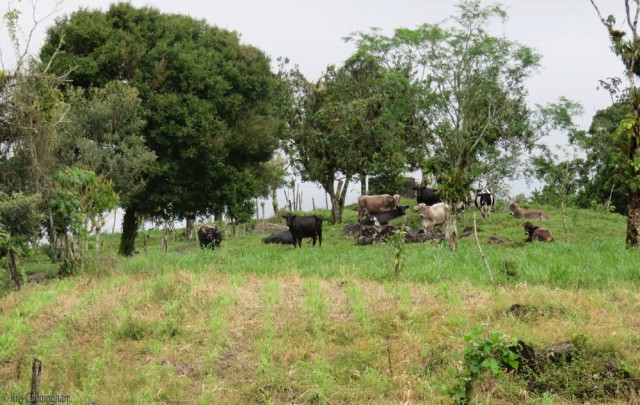
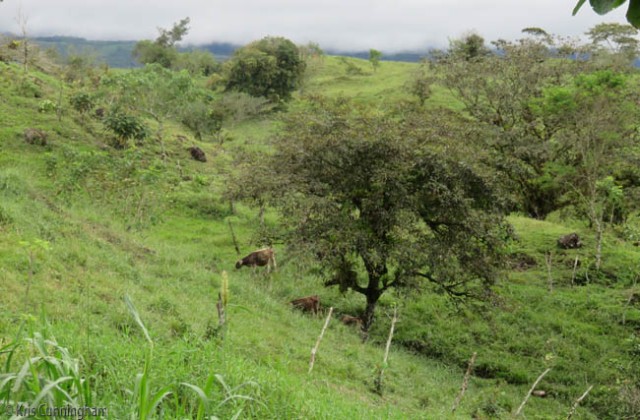

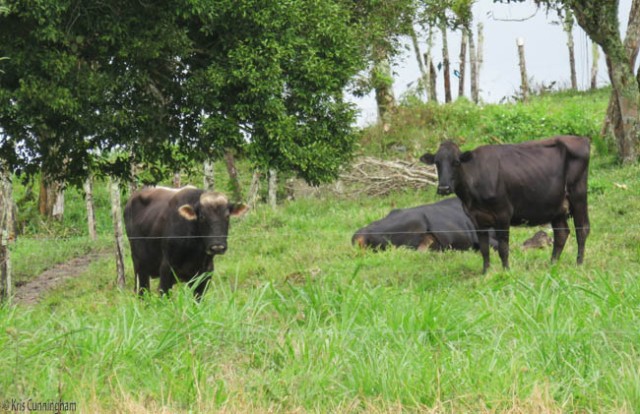
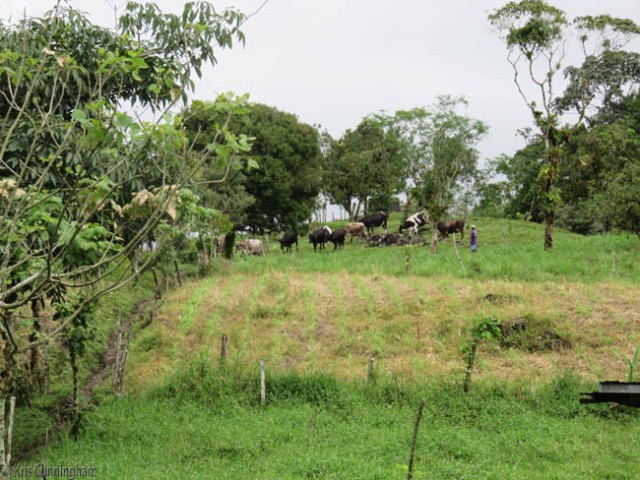
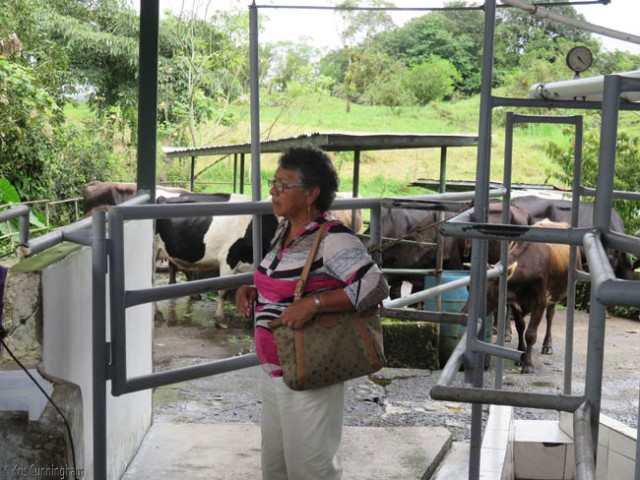
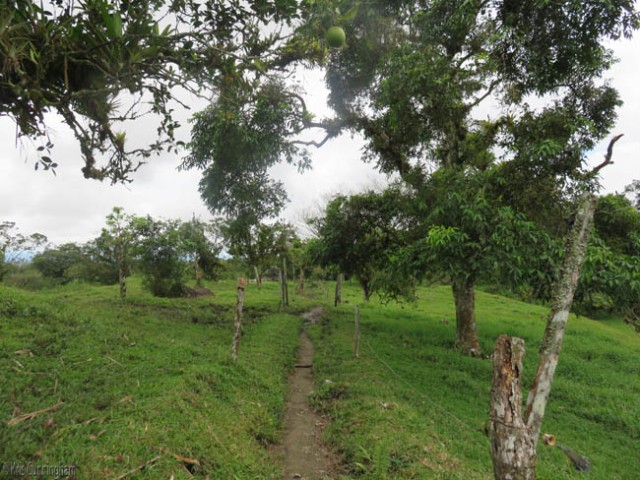
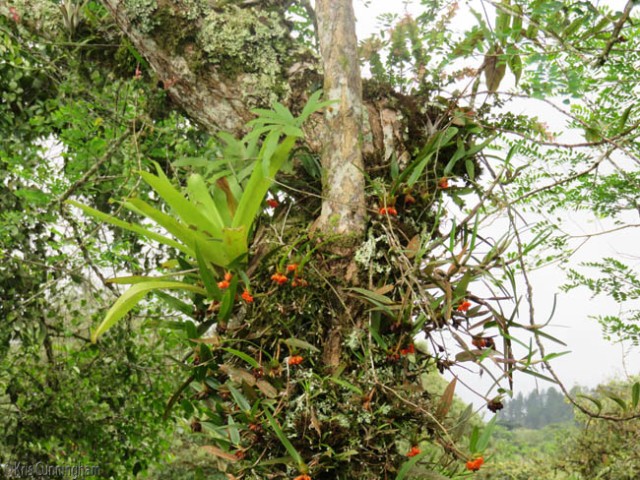

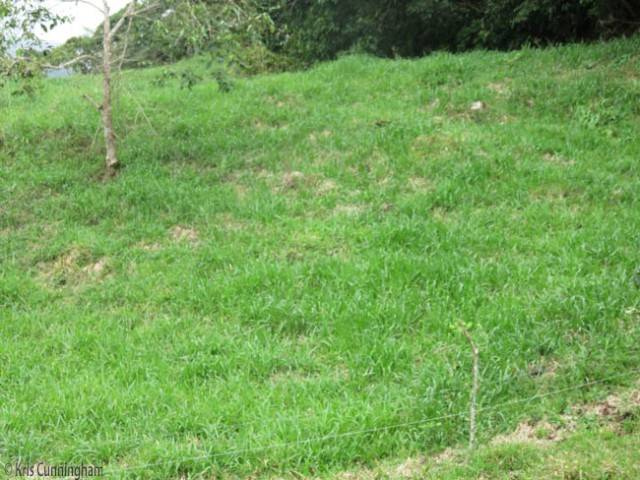

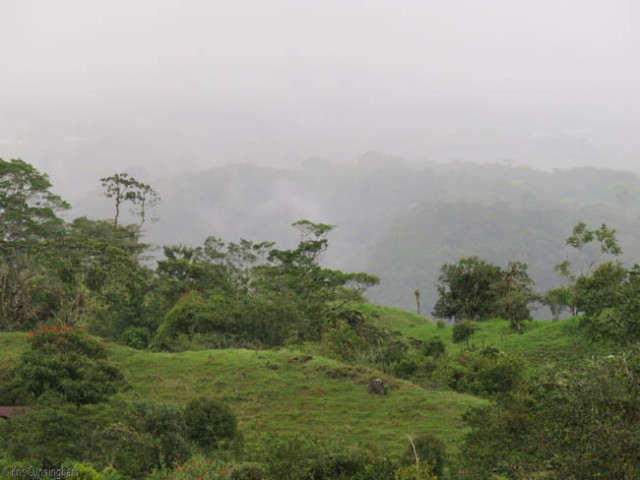


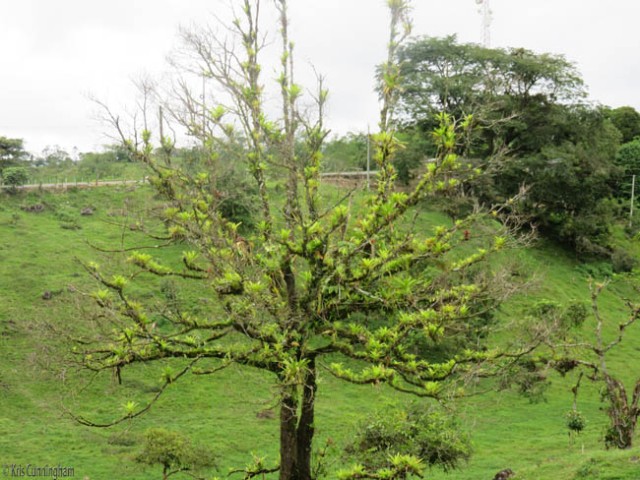
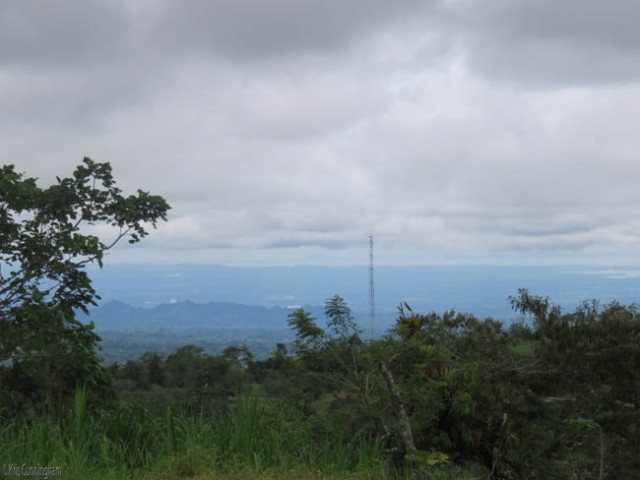
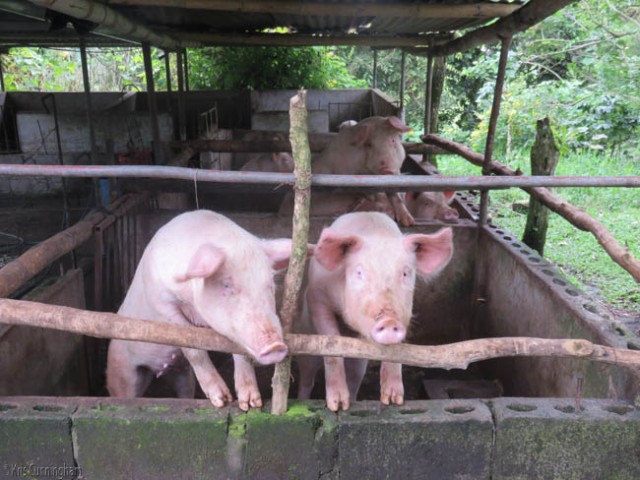






As I’m sure you’re aware, the national bird of Panama is NOT the harpy eagle but the common chicken. And for all those health nuts in the States who proclaim that “free range” chickens are better for you to eat, have you ever seen what THEY EAT? Icky bugs and stuff. Just yummy in your tamales, no?
LikeLike
Indeed, there is nor shortage of chickens in Panama. Many of the world’s people think bugs are good food. If I can get mine second hand via chicken, that works for me.
LikeLike
I grew up on a farm so you don’t have to tell me how much work it is. Or to stay away from the bulls and know where they are at all times. One of my sisters and I were chased by a bull once when we were kids. We didn’t think we’d live to see another day, but we ran as fast as we could and got over the fence just in time. I’ll never foget that feeling of panic. She won’t either. We talk about it now and then.
LikeLike
Wow, I can only imagine you and your sister and that bull! I’m glad you did live to see another day.
LikeLike
I have this very romanticized idea of what farming life would be like, but in reality, I really don’t know if I’d be good at it… thanks for a background glimpse into what it takes.
LikeLike
My pleasure, and if you ever want a closer look you can stay at the casita on the farm and dive right in 😀
LikeLike
That was funny Kris. I’ve milked before classes, 4:00 am. You always get me thinking….Love the blog. David.
LikeLike
Milking cows at 4AM? I’d never make it as a farmer.
LikeLike
I remember you talking about the farm and all the work that is required. Glad to hear the calves are growing and thriving. Thanks for the tour. She has a beautiful place. But, like you say, it’s a tremendous amount of work. Those pigs are so cute!
LikeLike
You should have seen it one time when all these little piglets were running around, playing, and squealing. That was way too cute!
LikeLike
I grew up on a farm, raised hogs, cattle, and hundreds of chickens for eggs to sell, which is a lot easier than milk cows, a uncle had them, so I’m familiar with how much time is required. On your friends farm, do they hand milk the cows, instead of milking machines? which makes it even more labor intensive.
LikeLike
It seems like that would be a lot of work constantly collecting eggs though. On this farm there is a milking machine so they only need to hand milk if the power is out or something is broken.
LikeLike
Fascinating!
Thanks.
LikeLike
My pleasure 🙂
LikeLike